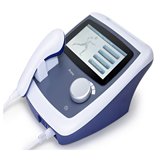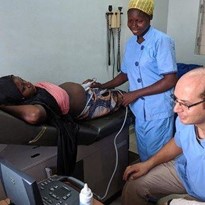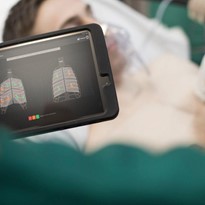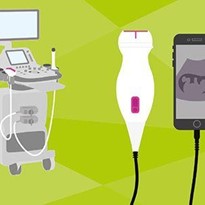Viable Alternative to High-Risk CVCs: Ultrasound-Guided Peripheral IVs
More than five million central venous catheter (CVC) lines are placed in U.S. hospitals each year, making it one of the most common invasive emergency room procedures.1 CVC placement involves the insertion of a large catheter into a patient’s major vessel. It is often used for those who have poor venous access where veins cannot be visualised, making it difficult to place an IV without multiple sticks. Due to its high-risk nature, CVC procedures can have a complication rate near 15%, which includes susceptibility to catheter-related blood stream infection or even death.2
Emergency physicians Dr. Arthur Au, Dr. Bon Ku and Dr. J. Matthew Fields developed a study to see if CVC placement for patients with difficult IV access could be replaced by ultrasound-guided peripheral intravenous IVs (USGPIVs).
“Ultrasound allows us to see veins that are invisible to the human eye. It allows us to know where to place an IV, so we can reduce the number of sticks and complications,” notes Dr. Ku.
Ultrasound Study Results Change Hospital CVC Placement Policy
The study involved 100 patients and was conducted using SonoSite’s M-Turbo® ultrasound systems.
The results showed that in 85 of 100 cases (85%) USGPIVs eliminated the need for CVC placement in patients with problematic IV access. These patients also had zero complications during the follow-up period.3 When you consider an approximate 15% complication rate for CVC procedures, the use of USGPIVs could lower rates to 2.25%. With the cost of each CVC complication ranging from approximately $15,000 to $50,000, greater use of USGPIVs can mean enhanced patient safety and a significant reduction in emergency department healthcare costs.
Because of the excellent results realised through this study, Dr. Ku indicated that the hospital has made it standard emergency department practise that patients with difficult IV access undergo attempts at ultrasound-guided peripheral IV catheter placement before insertion of a CVC.



























-Copy-205x205.jpg)







